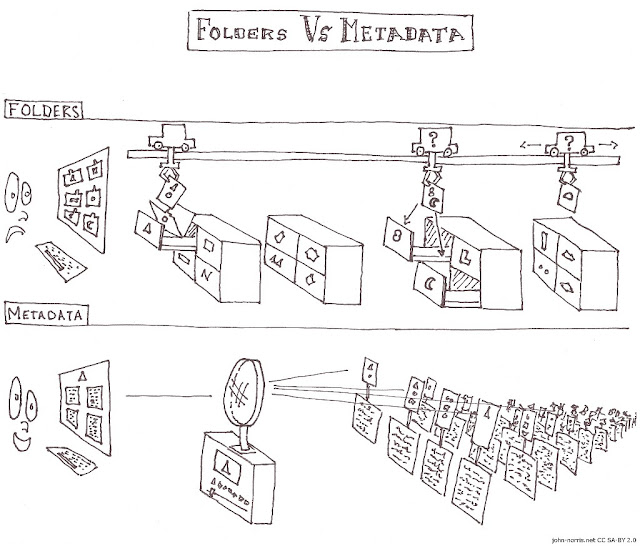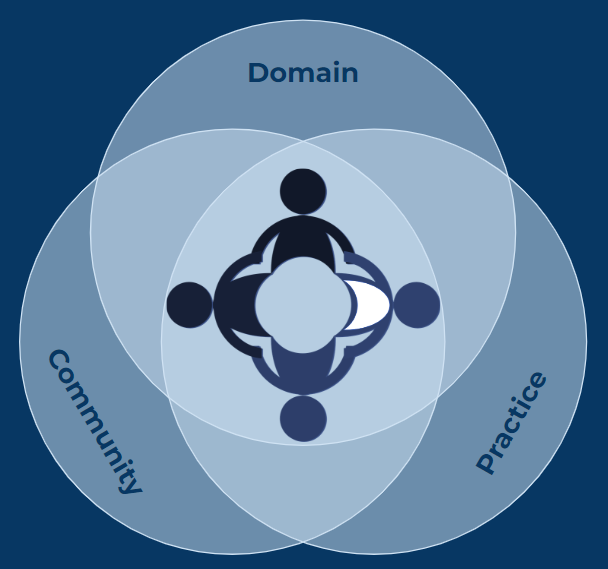Newsfeed
A newsfeed is a list of content on a website, with the newest content appearing at the top as the website is updated. Personal user newsfeeds on social media websites, such as Facebook, Twitter and Instagram, are updated with content (such as photographs, videos and text) from other users.
See below the image for further detail.
 |
| The New Facebook Newsfeed by Thomas Hawk, CC BY NC 2.0 |
"Newsfeed" may have been coined by Facebook, who introduced the feature to their home page in 2006, with the phrase entering more broad usage at some point afterwards.
A newsfeed is essentially a continuously updating stream of content, including posts, images, videos, and links from individuals, groups, and pages that a user has subscribed to or is following. In the digital age, they have become an integral part of our daily lives as an essential aspect of social media platforms.
For educators who are not particularly confident with their digital skills, understanding newsfeeds is useful as they can help facilitate learning and engagement with students. Newsfeeds can be customised to provide relevant and personalised information to readers - whether educators or their students - making it easier to access the latest information and resources relevant to their subject matter.
Newsfeeds are particularly useful in education because they can be tailored to fit individual learning styles and interests. For example, a science teacher can subscribe to a variety of science-related pages and groups to access the latest research, teaching resources, and discussions related to their field of study. By following relevant individuals, groups and organisations, they can easily stay up-to-date on the latest developments in their field without spending hours searching for information.
Newsfeeds can also be used as a tool for collaboration and sharing. For example, a teacher can create a newsfeed for a class or group of students, providing them with access to relevant content and resources for a particular project or topic. By doing so, they can facilitate collaboration, discussion, and sharing of ideas among students, leading to a richer and more engaging learning experience.
Another advantage of newsfeeds is that they can help educators keep track of their students' progress and engagement. By monitoring students' activity on the newsfeed, educators can assess the level of engagement and interest in the subject matter. This can help them identify areas where students may need additional support or guidance. This does, however, require that students are encouraged to engage with the content posted on which ever platform is being used.
With the increasing amount of information available on newsfeeds, it is essential for educators to develop critical digital skills to filter out irrelevant or inaccurate information. As such, educators must be able to evaluate the credibility and reliability of sources, critically analyse information, and avoid falling prey to fake news or misinformation.
It is important to understand that some social media sites often different versions of a newsfeed for you to browse. For example, Twitter has two options for the main feed that you see when browsing: For you and Following. The latter shows only content posted by accounts that you have explicitly chosen to follow. The For you option, however, mixes in content from other accounts that background algorithms have identified as similar to other posts that you have engaged with in some way - such as commenting on, sharing, or 'liking' them.
Newsfeeds can be a useful tool for educators working in many contexts. Some newsfeeds are private, viewable by and targeted to a particular cohort of learners, such as a closed Facebook group or a specific course's page in a Virtual Learning Environment. Some may be publicly available and open to anybody to subscribe to, such as a Twitter user's posts. Some enable responses, sharing and comments whilst others may lock down their posts so that they can be read but not responded to in a way that is visible to other followers of the newsfeed.
With the right skills, educators can leverage the power of newsfeeds to create a more engaging and enriching learning experience that extends beyond the confines of classrooms, online or off.
Next steps:
- Which websites and online services (including social media) do you use regularly? Identify the part of the page that could be described as a "newsfeed" if it has one - most sites do!
- For any social media sites that you have an account with, scroll through the posts that you see from other people and groups whilst signed in.
This is your personal "newsfeed". Do you see things that you don't want to see that are uninteresting, irrelevant, or upsetting?
These are all posted by people or organisations that you have chosen to follow, so the best way to get rid of content you don't want to see is to stop following the people who are posting it!
And if there's anything missing - maybe you want to see more posts about digital skills, for example - try finding people to follow who post about those things. - Now browse the list of your own posts (you can probably find this by going to your profile).
This is what other people who are following you see in their newsfeeds, amongst those from everyone else they follow.
Do yours paint a picture of you that's accurate?
Do they tell a story about you or your interests that you're happy for other people to see? - Why not share a link to this post in your newsfeed so that others can see it in theirs! You could try accompanying it with an opinion and/or ask other people for theirs and see if anyone responds.
Further reading:
- From the Glossary: Blog | VLE | Digital Skills
- Elsewhere online: Time Magazine's Newsfeed | "Newsfeed" definition (TechTarget) | How Do Social Media Algorithms Work? (Digital Marketing Institute)







.png)

Comments
Post a Comment